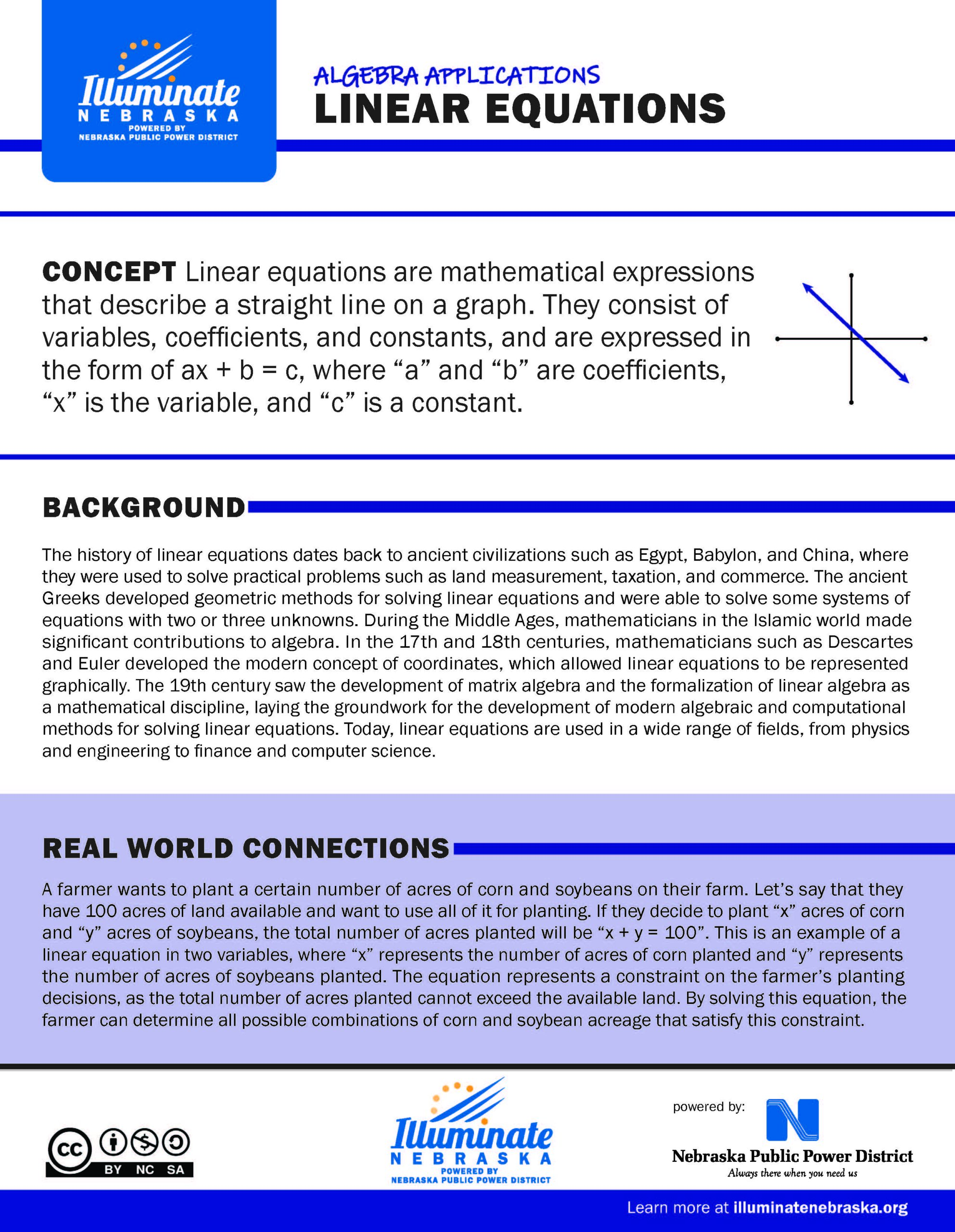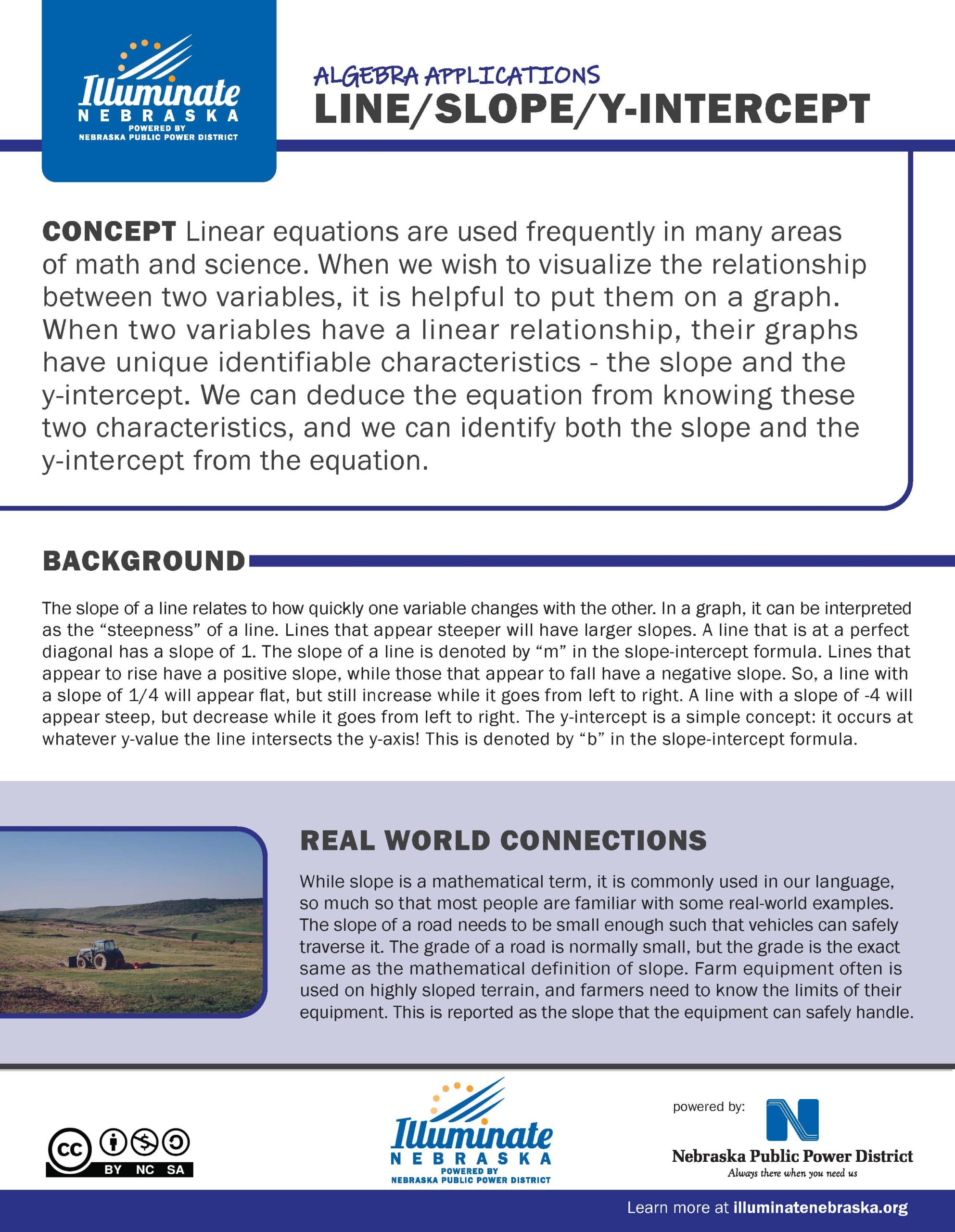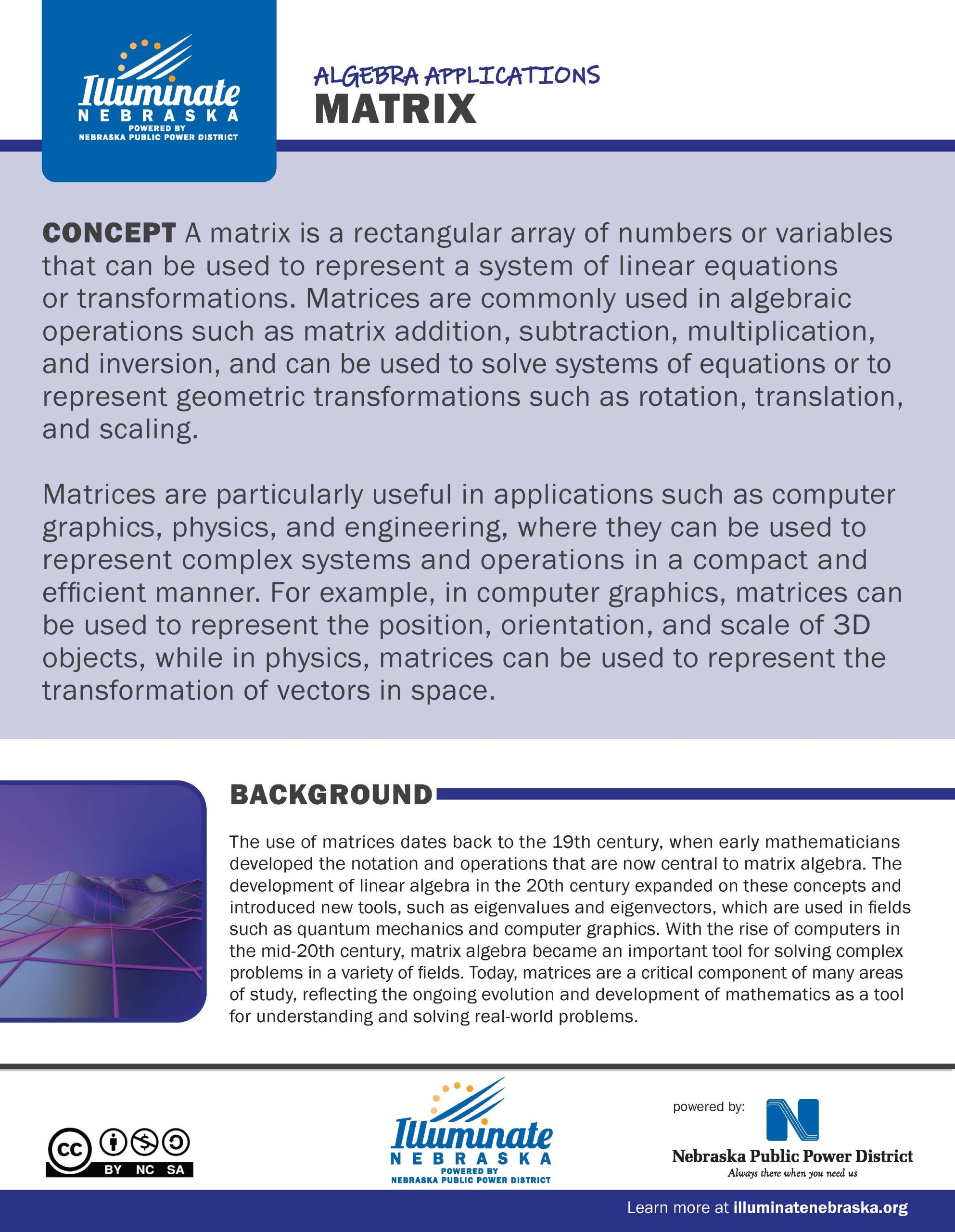Linear Equations
Linear equations are mathematical expressions that describe a straight line on a graph. They consist of variables, coefficients, and constants, and are expressed in the form of ax + b = c, where “a” and “b” are coefficients, “x” is the variable, and “c” is a constant.
Line / Slope / Y-Intercept
Linear equations are used frequently in many areas of math and science. When we wish to visualize the relationship between two variables, it is helpful to put them on a graph. When two variables have a linear relationship, their graphs have unique identifiable characteristics – the slope and the y-intercept.
Vectors
Vectors are a mathematical tool that allow us to perform computations while considering multiple dimensions. In common terms, a vector is a quantity which has both magnitude and direction, as opposed to just magnitude (like an integer).
Matrix
A matrix is a rectangular array of numbers or variables that can be used to represent a system of linear equations or transformations. Matrices are commonly used in algebraic operations such as matrix addition, subtraction, multiplication, and inversion, and can be used to solve systems of equations or to represent geometric transformations such as rotation, translation, and scaling.
Solving for Unknowns
Solving for unknowns involves finding the value of one or more unknown variables in an algebraic equation or system of equations that describes a real-world problem. These applications could include problems from physics, engineering, economics, or other fields. To solve for unknowns, algebraic expressions are manipulated through various techniques such as substitution, elimination, and factoring.





